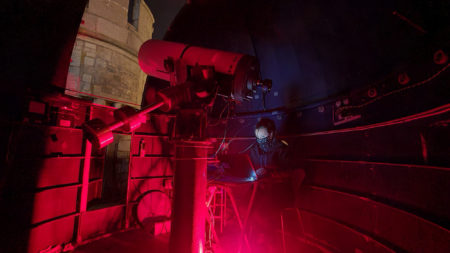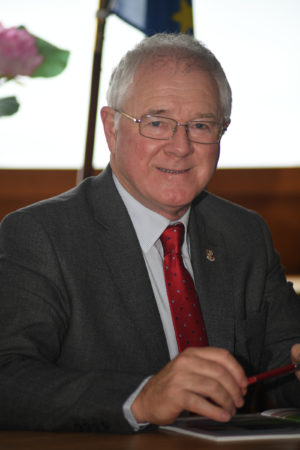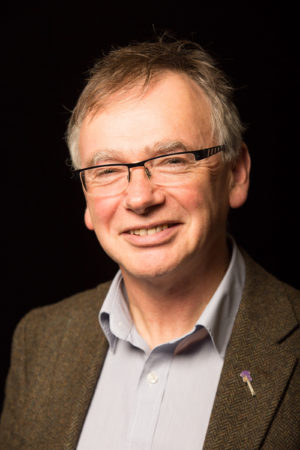30 October 2020
By Tom Collins
tom@TheCork.ie
Society, Economy and Environment (SEE) Space network bids to forge links with European Space Agency
TWO world-renowned research teams with expertise in areas such as cybersecurity, telecommunications, quantum communications and more have joined forces to establish Ireland’s first ever ‘Space Region’ and ‘boldly go where no one has ever gone before’.
Cork Institute of Technology and Waterford Institute of Technology have come together to form the Society, Economy and Environment (SEE) Space network, an exciting new partnership which builds on their reputation as centres of leading-edge research and innovation with the potential to build links to international space organisations such as the European Space Agency.
The SEE Space Network is a landmark pool of decades of talent, knowledge and expertise and the new team is ideally positioned to take advantage of the educational, economic and societal benefits of the global space industry which is projected to be worth €2 trillion by 2030.
Space 4.0 is a major focus for companies and institutions from the very small to the very large and now is the perfect time to take advantage of the two institutions’ expertise in areas such as cybersecurity, telecommunications, quantum communications, materials science, photonics and advanced manufacturing, those behind the SEE-Space Network say.
Working together, the new research team, headed up by Dr Niall Smith in Cork and Dr Mark White in Waterford, will use space to solve problems that are relevant to the region and the country, building the Irish Space Coast and attracting inward investment from national and international sources.
CIT President, Dr Barry O’Connor, said:
“Working together, we will use space to solve problems that are relevant to us in our region and nationally, building the Irish Space Coast and attracting inward investment from national and international sources. On our journey, we will engage with leaders in their respective domains and help them to see space as an opportunity to grow their businesses.
“We will work with communities to see how best to use space to solve their issues, to increase their sustainability and improve their competitiveness. We will work to inspire the next generations of scientists and engineers.
“The SEE Space network is built on CIT’s and WIT’s long track record of achievement in research, innovation and outreach with an annual research expenditure of almost €40m. CIT operates the Blackrock Castle Observatory which has been a leading advocate of Space 4.0 and represented the Higher Education community in the development of the National Space Strategy for Enterprise, 2019-2024″.
Speaking about the initiative, WIT President, Professor Willie Donnelly, highlighted the potential impact that this collaboration will have regional economic development.
“Bringing together two of Ireland’s top performing research institutions to conduct multidisciplinary research and innovation in space will create exciting new funding opportunities particularly in the European Framework which will in turn deliver a new generation of advanced technology companies for Ireland and the Southern region. This in turn will provide exciting research and employment opportunities for our students.
“This initiative will create regional expertise, competence and ‘readiness’ for many businesses in the South of Ireland who are looking at the developing space and low-orbital environment and wondering how they will migrate their current operations, products or R&D from or through space. Low orbital operations are rapidly becoming the new business frontier and WIT and CIT want to be at the forefront of all developments. Breaking ground in this domain will serve both WIT and CIT extremely well as we both separately mature into our respective technological universities.”
Over the course of the initial three-year agreement, the SEE Space Network will focus on education and research in Quantum Communications and Cybersecurity, Earth Observation and Space 4.0 in general, with Low Earth Orbit Satellites (LEOs) a particular area of interest.
They will explore potential areas of cooperation and collaboration such as co-funded PhDs offering students an opportunity to engage in research related to this exciting, cutting-edge area. They have also agreed to investigate options for applications to existing scholarship programmes, including internal competitive scholarship programmes. Two co-funded PhDs have already been established.
The team will also investigate, more generally, opportunities to collaborate on relevant research activities and to work together to develop the following: a three-year strategic outline; a roadmap of national and regional benefits; a high level work plan and work streams; identification of potential European grant calls that will be targeted and a high level communications and marketing plan.
The impact of the collaboration will include broadening the career opportunities for students; strengthening the capacity of industry sectors with which CIT and WIT collaborate currently and developing roadmaps for exploiting Space 4.0. They will also team up on the development of new technologies, products and processes, enhancing the reputation of CIT and WIT as centres of leading-edge research and innovation and building stronger links to international space organisations such as the European Space Agency.




